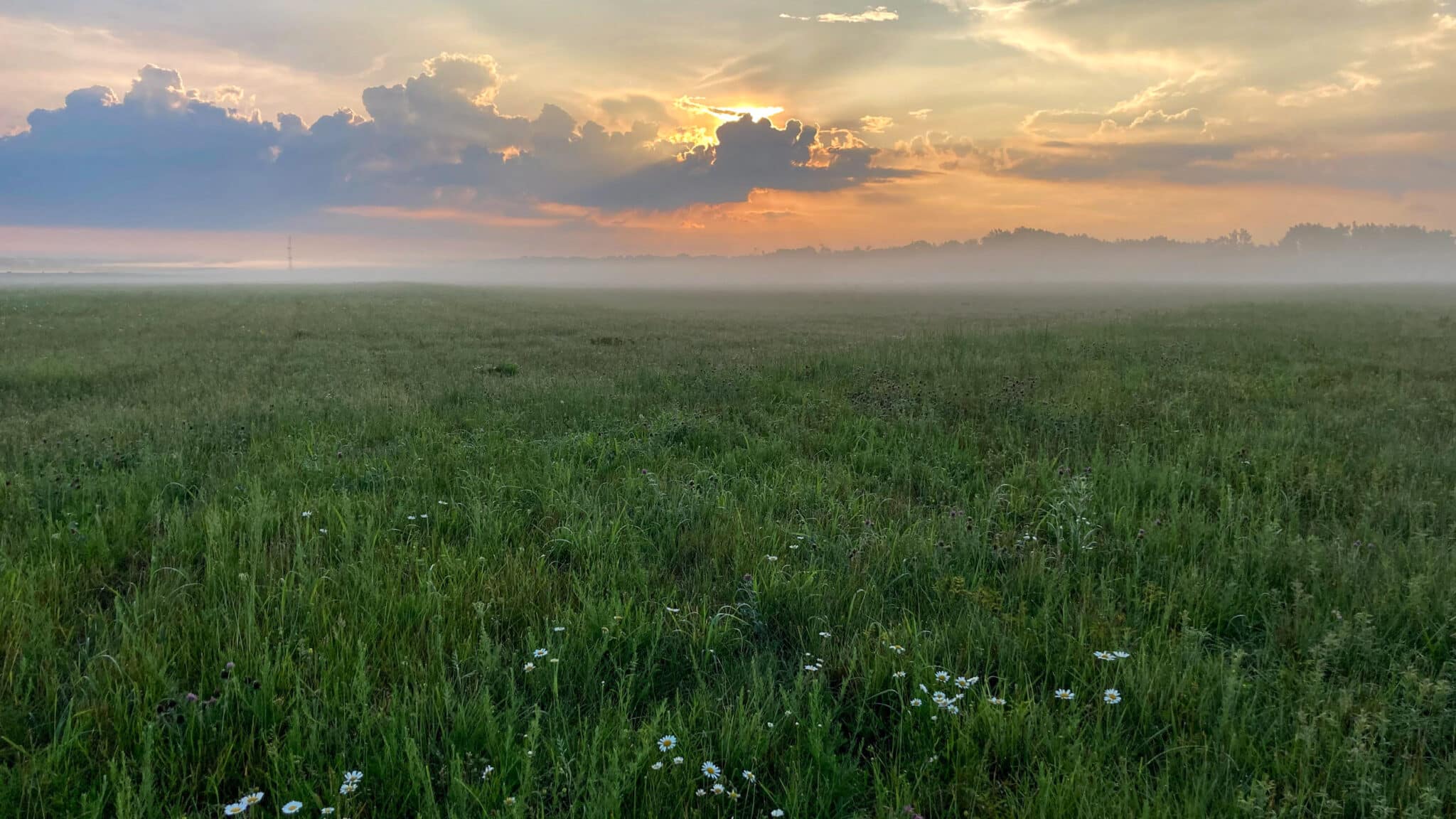Grassland Bird Project
Steve Byland
Over one-third of the threatened and endangered birds in New Jersey rely on grassland habitat in some way for survival, whether it be for foraging or nesting (and in most cases both). Grassland habitat can be classified as the traditional meadow of grasses, forbs and wildflowers, but it can also come in other forms such as agricultural fields, pastures, fallow fields, and even airports. Grasslands are the fastest vanishing habitat in New Jersey, and this is having a devastating effect on grassland birds. A few thousand acres of farmland are lost every year to development and vegetative succession. Changing agricultural practices have resulted in earlier and more frequent harvests (which means mowing during the critical nesting period), monocultures, and crops of limited habitat value.
To keep grassland habitat valuable to wildlife, active management techniques to suppress succession are recommended, including mowing, controlled burning and grazing. Management must be done only prior or after the nesting season, as it would be detrimental to avian eggs and nestlings to carry out these active management techniques.
Grasslands are the fastest vanishing habitat in New Jersey, and this is having a devastating effect on grassland birds.
Partners working for a greater good
In 2005, Conserve Wildlife Foundation partnered with the New Jersey Fish and Wildlife Endangered and Nongame Species Program (ENSP), U.S. Fish and Wildlife Service (USFWS), and NJ Audubon Society in a state-wide effort to protect, create, and manage grasslands. Farmers and other land managers were trained to align their goals with good habitat management. Landowners were enrolled in incentive programs and guided through the technical aspects of restoration.

Going a step further, farm fields and conventional grass fields can be converted to a more wildlife friendly cover — native warm-season grasses. These grasses grow in “bunches,” providing birds with excellent nesting cover within the tufts of grass and with open foraging space between them. This is the technique CWF employs in its current grassland project at the Joint Base McGuire-Dix-Lakehurst (JB MDL).
JB MDL hosts the largest known breeding colony of the endangered upland sandpiper (Bartramia longicauda), and the second-largest known breeding colony of the threatened grasshopper sparrow (Ammodramus savannarum) in the State. The state threatened bobolink (Dolichonyx oryzivorus), savannah sparrow (Passerculus sandwichensis), horned lark (Eremophila alpestris) and eastern meadowlark (Sturnella magna) have all utilized this site to nest. CWF has partnered with the USFWS to restore or convert hundreds of acres of this vital habitat to increase suitability and to alter management practices to benefit both wildlife and airfield operations at JB MDL. CWF, along with USFWS, also conducts grassland bird surveys at JB MDL during the breeding season to study how the restoration projects affect nesting grassland bird populations.